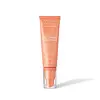What's inside
What's inside
 Key Ingredients
Key Ingredients

 Benefits
Benefits

 Concerns
Concerns

 Ingredients Side-by-side
Ingredients Side-by-side

Water
Skin ConditioningSodium Cocoate
CleansingSodium Palmate
CleansingGlycerin
HumectantSodium Safflowerate
CleansingSorbitol
HumectantPropylene Glycol
HumectantSorbitan Oleate
EmulsifyingHamamelis Virginiana Water
AstringentAlcohol
AntimicrobialKojic Acid
AntioxidantAzelaic Acid
BufferingGlycyrrhiza Glabra Root Extract
BleachingCamellia Sinensis Leaf Extract
AntimicrobialHydrolyzed Soy Protein
HumectantCamphor
MaskingNiacinamide
SmoothingCalcium Ascorbate
AntioxidantGlucosamine Hcl
Maltose
MaskingSodium Lactate
BufferingTannic Acid
AstringentAlpha-Arbutin
AntioxidantGlutathione
Water, Sodium Cocoate, Sodium Palmate, Glycerin, Sodium Safflowerate, Sorbitol, Propylene Glycol, Sorbitan Oleate, Hamamelis Virginiana Water, Alcohol, Kojic Acid, Azelaic Acid, Glycyrrhiza Glabra Root Extract, Camellia Sinensis Leaf Extract, Hydrolyzed Soy Protein, Camphor, Niacinamide, Calcium Ascorbate, Glucosamine Hcl, Maltose, Sodium Lactate, Tannic Acid, Alpha-Arbutin, Glutathione
Water
Skin ConditioningPolyacrylate-13
Squalane
EmollientShea Butter Ethyl Esters
EmollientPolyisobutene
Phenoxyethanol
PreservativeRetinyl Palmitate
Skin ConditioningCitrus Aurantium Dulcis Peel Oil
MaskingXylitylglucoside
HumectantAnhydroxylitol
HumectantTetrahexyldecyl Ascorbate
AntioxidantTocopheryl Acetate
AntioxidantCollagen Amino Acids
MoisturisingPolysorbate 20
EmulsifyingXylitol
HumectantEthylhexylglycerin
Skin ConditioningSodium Hyaluronate
HumectantAlpha-Arbutin
AntioxidantGlutathione
Kojic Acid
AntioxidantNiacinamide
SmoothingAzelaic Acid
BufferingTocopherol
AntioxidantWater, Polyacrylate-13, Squalane, Shea Butter Ethyl Esters, Polyisobutene, Phenoxyethanol, Retinyl Palmitate, Citrus Aurantium Dulcis Peel Oil, Xylitylglucoside, Anhydroxylitol, Tetrahexyldecyl Ascorbate, Tocopheryl Acetate, Collagen Amino Acids, Polysorbate 20, Xylitol, Ethylhexylglycerin, Sodium Hyaluronate, Alpha-Arbutin, Glutathione, Kojic Acid, Niacinamide, Azelaic Acid, Tocopherol
 Reviews
Reviews

Ingredients Explained
These ingredients are found in both products.
Ingredients higher up in an ingredient list are typically present in a larger amount.
Alpha-Arbutin is made from hydroquinone and glucose. It may also be derived from the fermentation of soybeans.
This ingredient an antioxidant, meaning it helps protect your skin cells against damage.
Studies show this ingredient helps improve hyperpigmentation and fade discoloration.
Alpha-Arbutin may be used with other ingredients that help with hyperpigmentation. These ingredients include retinol, Vitamin C, niacinamide, and tranexamic acid.
Learn more about Alpha-ArbutinAzelaic acid is a multitasker ingredient that helps treat acne, pigmentation, and irritation. It is a great option for sensitive skin.
What makes azelaic special?
The best thing about azelaic acid is it's gentleness. It's generally well-tolerated and safe to use alongside other actives like niacinamide or salicylic acid.
Unlike AHAs, azelaic acid will not make you photosensitive/sun sensitive.
You can find this ingredient naturally occurring in grains like wheat, rye, and barley. In cosmetics, azelaic acid is typically lab-made, which is more stable and effective.
Learn more about Azelaic AcidGlutathione is an antioxidant naturally found in our bodies. It is made up of three amino acids: glycine, cysteine, and glutamic acid.
As an antioxidant, it prevents oxidative damage to parts of our cell.
While glutathione is said to help with fading dark spots, the results from research are inconclusive. Further studies are needed. With that said, gluthatione has been shown to protect our skin from UV-B induced damage.
This ingredient is naturally occurring in plants, animals, fungi, and some bacteria.
Learn more about GlutathioneKojic acid comes from fungi and can also be from fermented foods. It helps even out skin tone and reduce hyperpigmentation.
This ingredient works by blocking tyrosine, an enzyme that starts the process of skin darkening.
Kojic Acid is antifungal and often used to treat fungal infections. Additionally, it can help fight bacteria with its antimicrobrial properties. This can help treat acne as well.
A similar ingredient is arbutin.
Learn more about Kojic AcidNiacinamide is a multitasking form of vitamin B3 that strengthens the skin barrier, reduces pores and dark spots, regulates oil, and improves signs of aging.
And the best part? It's gentle and well-tolerated by most skin types, including sensitive and reactive skin.
You might have heard of "niacin flush", or the reddening of skin that causes itchiness. Niacinamide has not been found to cause this.
In very rare cases, some individuals may not be able to tolerate niacinamide at all or experience an allergic reaction to it.
If you are experiencing flaking, irritation, and dryness with this ingredient, be sure to double check all your products as this ingredient can be found in all categories of skincare.
When incorporating niacinamide into your routine, look out for concentration amounts. Typically, 5% niacinamide provides benefits such as fading dark spots. However, if you have sensitive skin, it is better to begin with a smaller concentration.
When you apply niacinamide to your skin, your body converts it into nicotinamide adenine dinucleotide (NAD). NAD is an essential coenzyme that is already found in your cells as "fuel" and powers countless biological processes.
In your skin, NAD helps repair cell damage, produce new healthy cells, support collagen production, strengthen the skin barrier, and fight environmental stressors (like UV and pollution).
Our natural NAD levels start to decline with age, leading to slower skin repair, visible aging, and a weaker skin barrier. By providing your skin niacinamide, you're recharging your skin's NAD levels. This leads to stronger, healthier, and younger looking skin.
Another name for vitamin B3 is nicotinamide. This vitamin is water-soluble and our bodies don't store it. We obtain Vitamin B3 from either food or skincare. Meat, fish, wheat, yeast, and leafy greens contain vitamin B3.
The type of niacinamide used in skincare is synthetically created.
Learn more about NiacinamideWater. It's the most common cosmetic ingredient of all. You'll usually see it at the top of ingredient lists, meaning that it makes up the largest part of the product.
So why is it so popular? Water most often acts as a solvent - this means that it helps dissolve other ingredients into the formulation.
You'll also recognize water as that liquid we all need to stay alive. If you see this, drink a glass of water. Stay hydrated!
Learn more about Water